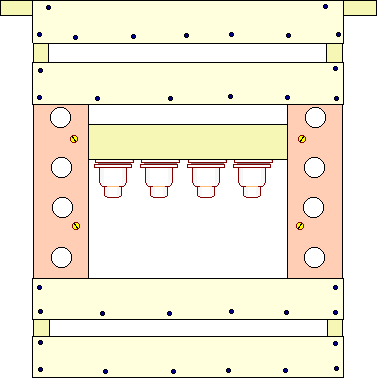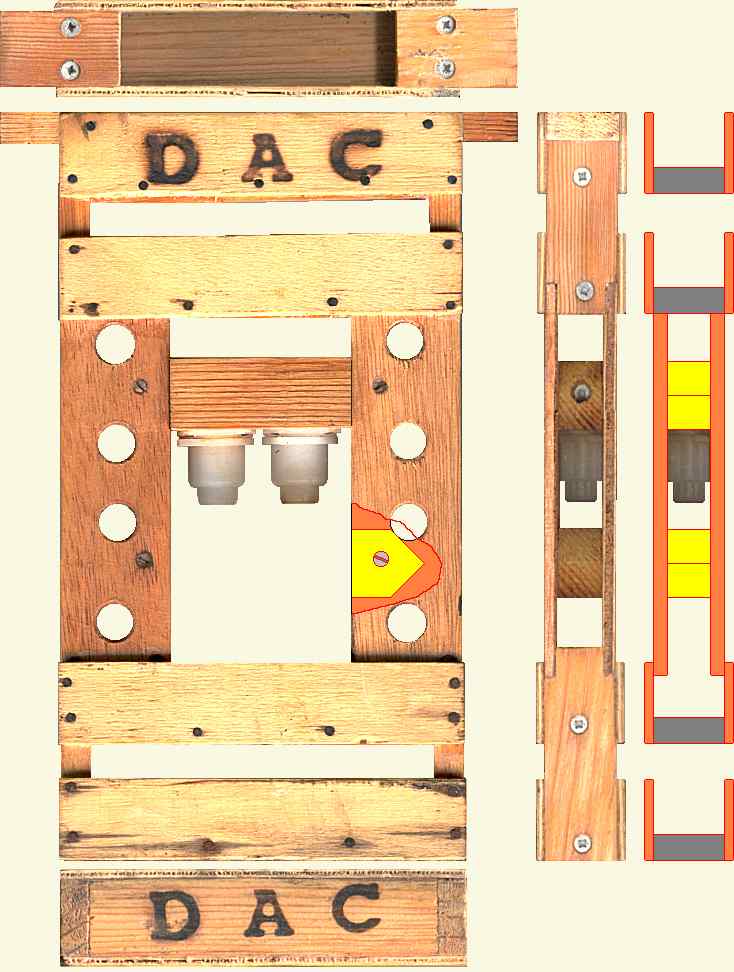The large drawing is a composite of several views that were taken on a flatbed scanner and stitched together to look like an 'American or 3rd angle' drawing. The smaller image below right shows the half width version with four nipples for cells. The cut away portion reveals the arrow head shape of the spacing blocks that helps bee flow into the central region where the cells are developing. Small brass screws were used to secure these blocks, there is no special reason for them being brass, they were merely already available. The view at right is a section that shows the troughs that are used for feeding.

I used the method only about a hundred times, even back in 2000 my physique was failing and my beekeeping dwindling down.
If quality is your aim rather than quantity (quality judged by the bees, not beekeeper ideas) then using two queen cells is a good method. The two cells are allowed to develop and emerge in the mating nuc, with little beekeeper disturbance apart from feeding during the open cell stages. The bees themselves making the final choice between the two cells.
These special frames would hold two or four queencell cups and had four troughs incorporated in their design to allow feeding of pollen and 50% diluted honey. The two troughs nearest to the cell cups are for pollen and the liquid feed goes it the topmost and bottommost troughs. There is nowhere for comb to be built and access to the portion where the cells are is very easy for the bees.
Of the two systems the version with only two cells worked best for me, because they could be left to their own devices if I was not up to visiting the apiary. I was unable to discern any problems with any of the resulting queens, most of those with two cells, raised both to maturity, of those that had four cells about 60% only raised three. When the cells in the wider frames were sealed the outer two of the four would be 'stolen' and used elsewhere.
The bar with the cell cups will swivel to help adding the cell cups and/or grafting into them. I have used wax cups, Jenter cups, Cupkit cups and JZ BZ type cups in these types of frame, with no detectable preference by the bees for any type.
The frames with cells have always been placed in the middle of a five frame box. I only made twenty of the one third width version and ten of the half width type.
Dave Cushman.
Page created pre-2011
Page updated 07/12/2022
